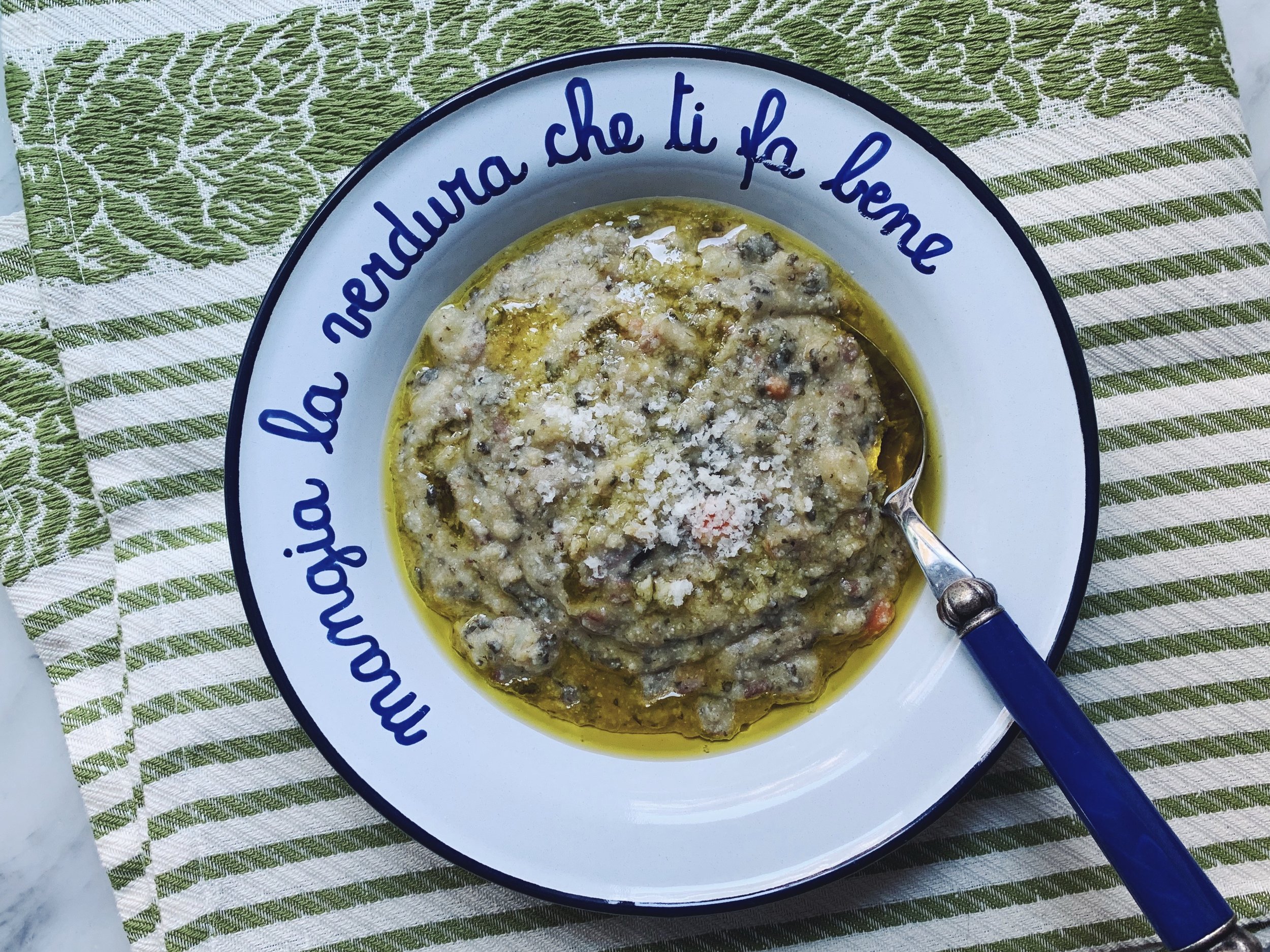Polenta Incatenata
I have a small collection of cookbooks published by Slow Food. Many of the books they put out are smallish paperbacks with a defined focus, which is what I like about them. Among the ones I own are a book of recipes from osterie in Abruzzo, and one devoted solely to ravioli recipes, which I have yet to dig into. This recipe comes from a third, called "Ricette di Liguria."
I've written elsewhere about how smitten I am with the food of this region on Italy's northern Mediterranean coast, and the deeper I delve into it the more I love it, especially the endless ways Ligurians have with vegetables and meatless dishes.
Polenta incatenata is one such dish. The name translates to "chained" polenta, which sounds a little macabre. Maybe "linked" is a better word. This is a hearty dish, composed of borlotti beans, kale, potatoes, onions, and carrots, all simmered together and then simmered again with cornmeal. As you stir and stir, the beans and the potatoes and the kale and the onions and the carrots gradually become softer and softer, melting almost to become one with the polenta. What emerges from the pot is completely different from what went into it, a porridge of sorts, gentle in flavor and creamy in texture.
According to "Ricette di Liguria," this recipe comes from Sarzana, a picturesque town in the province of La Spezia where, coincidentally, I bought the soup plate shown in the photo at the top of this post. (For those who don't read Italian, the lettering says "eat your vegetables; they're good for you.")
Sarzana is just over the border from northwestern Tuscany, which also lays claim to a version of this recipe. That corner of Italy gets cold and damp in winter, so a bowl of this comforting, nutrient-rich polenta, brightened with a drizzle of good olive oil, would no doubt be welcomed, no matter which side of the border you are on. I can tell you that here in Virginia, on a night of hard, icy rain, it definitely hit the spot.
POLENTA INCATENATA
Makes 6 to 8 servings
Ingredients
7 ounces / 200 g dried borlotti (cranberry) beans
1 bunch (8 ounces / 225 g) lacinato (Tuscan) kale
2 big yellow potatoes
2 carrots
1 medium yellow onion
2 small cloves garlic
1/2 cup / 150 ml extra-virgin olive oil, plus more for serving
Salt to taste
2 cups (10 ounces / 300 g) finely ground cornmeal
1 cup freshly grated Grana Padano or Parmigiano-Reggiano
Instructions
Rinse the beans and put them in a large bowl with water to cover by 2 inches and a pinch of baking soda. Let them soak overnight. Drain and rinse, then put them in a pan with water to cover by 2 inches. Add a generous pinch of salt and bring to a boil. Lower to a simmer and cook for 20 minutes, until the beans are almost tender but still a bit al dente. Drain and set aside.
Remove and discard the tough stem ends from the kale and cut the leaves crosswise into thin strips (chiffonade). Peel the potatoes and cut them into bite-sized cubes. Coarsely chop the carrots, onion, and garlic.
Combine all the vegetables and the drained beans in a large heavy-bottomed pot and add 2 1/2 quarts / 2 1/2 liters water. Pour in the olive oil. Bring to a boil over medium-high heat and skim any foam that forms on the surface. Lower the heat to medium or medium-low and simmer gently for 30 minutes, until the vegetables are tender.
Add the cornmeal in a slow stream, stirring all the while to prevent lumps from forming. Bring to a simmer and cook, stirring often to prevent the polenta from sticking to the bottom of the pot, for 35 to 45 minutes, until the polenta is cooked. At this point, the polenta should be thickened but still pourable. Much of the vegetable and bean mixture will have turned creamy and become one with the polenta, though some pieces and texture will remain.
Ladle the polenta into individual bowls and sprinkle each serving generously with the grated cheese. Finish with a drizzle of really good olive oil, preferably new harvest. Olio2Go is an excellent online source for olive oil from Italy, including olio nuovo (new harvest).



